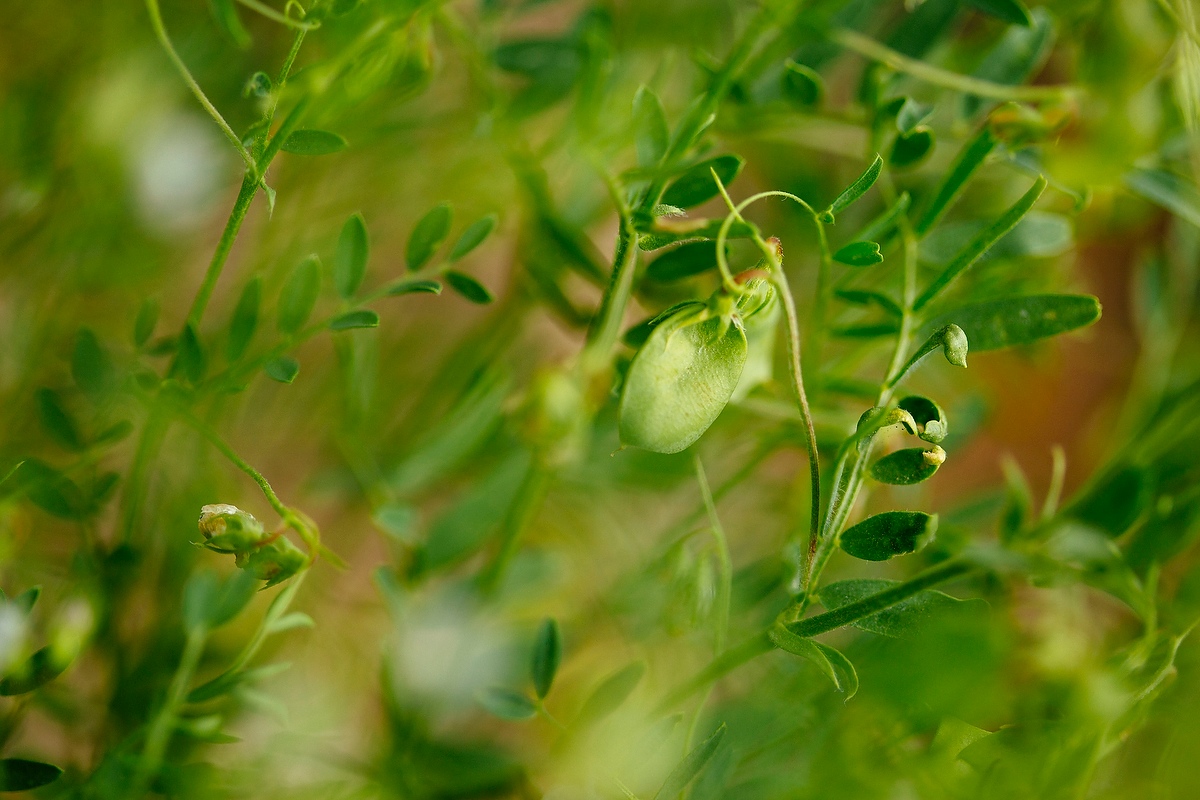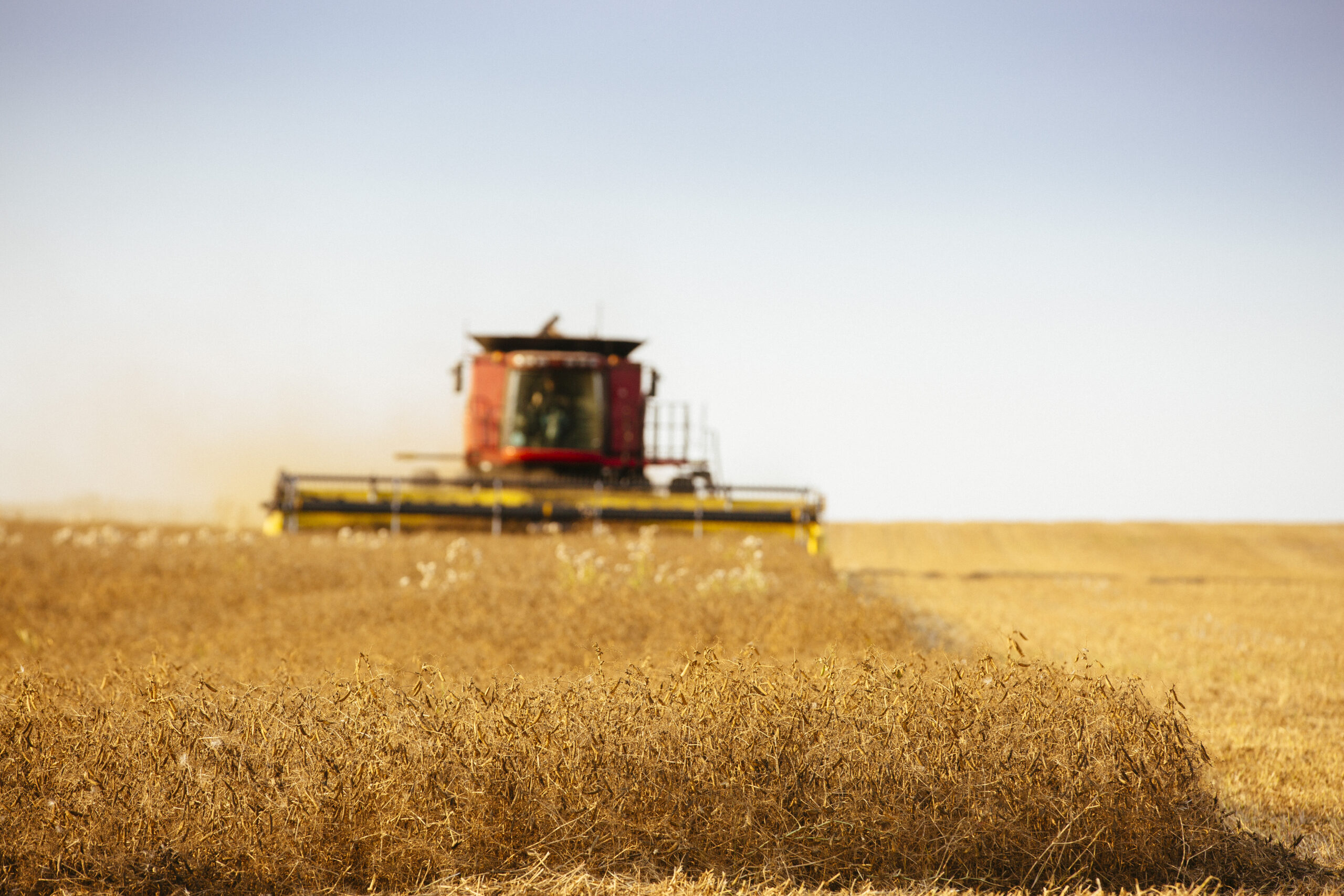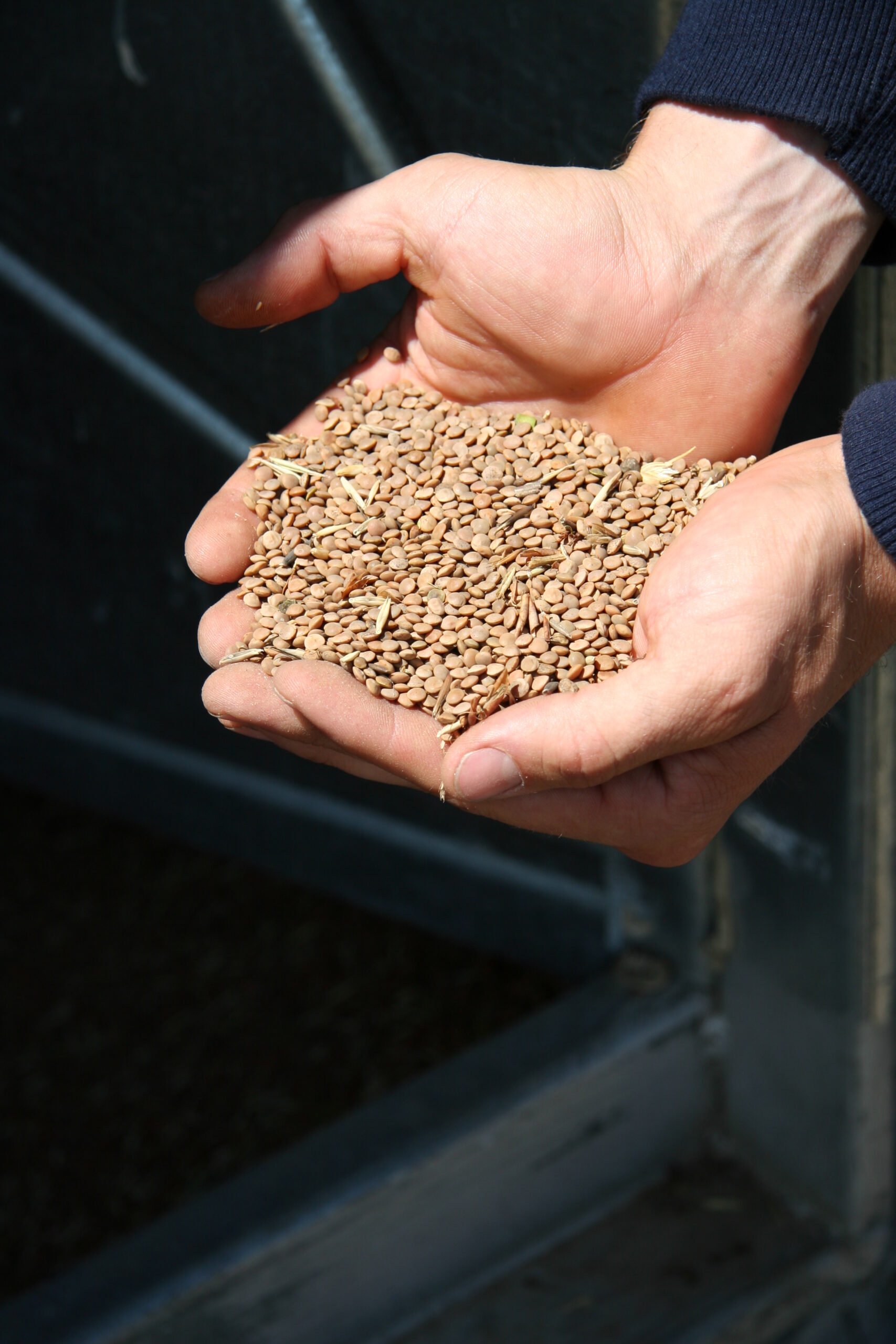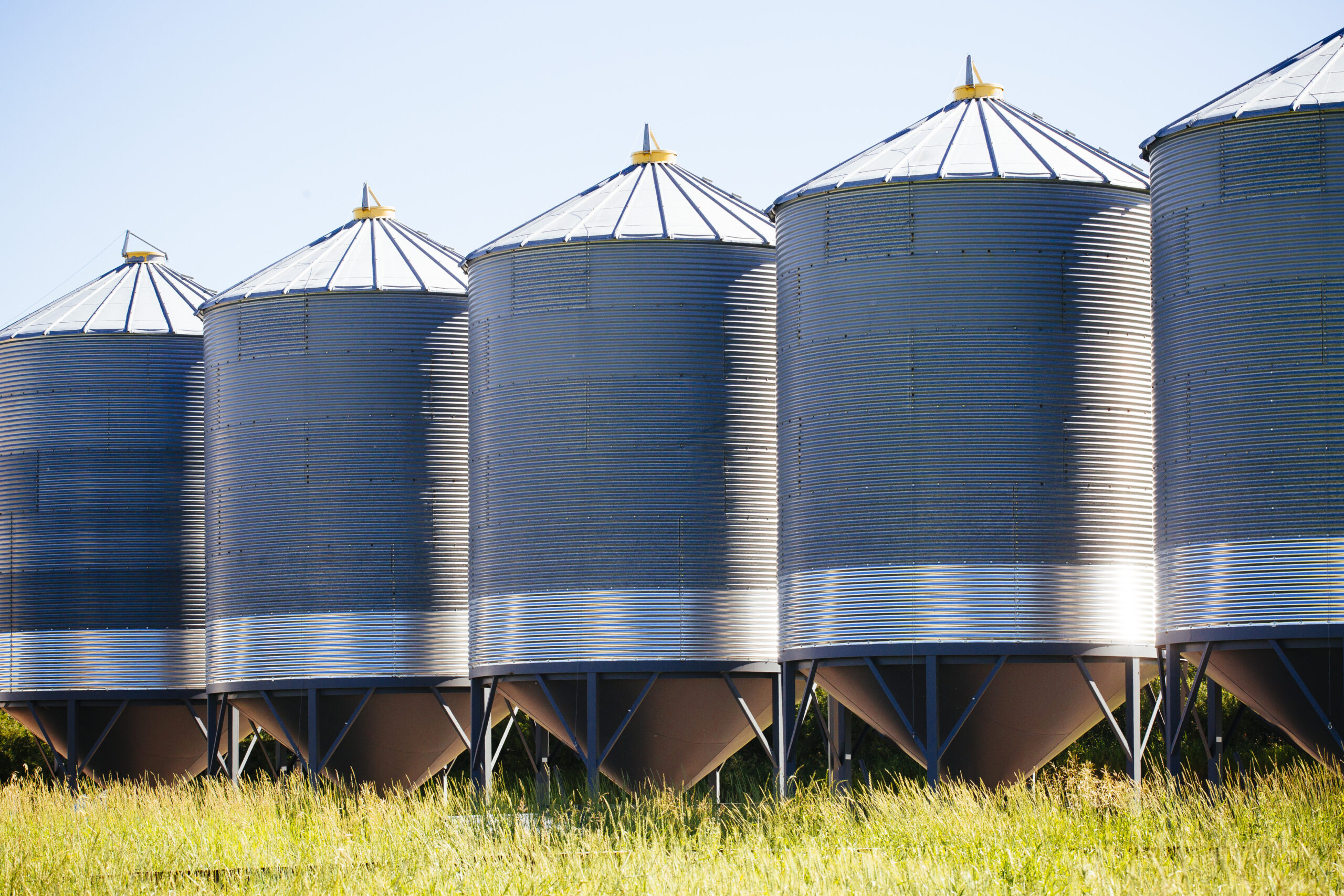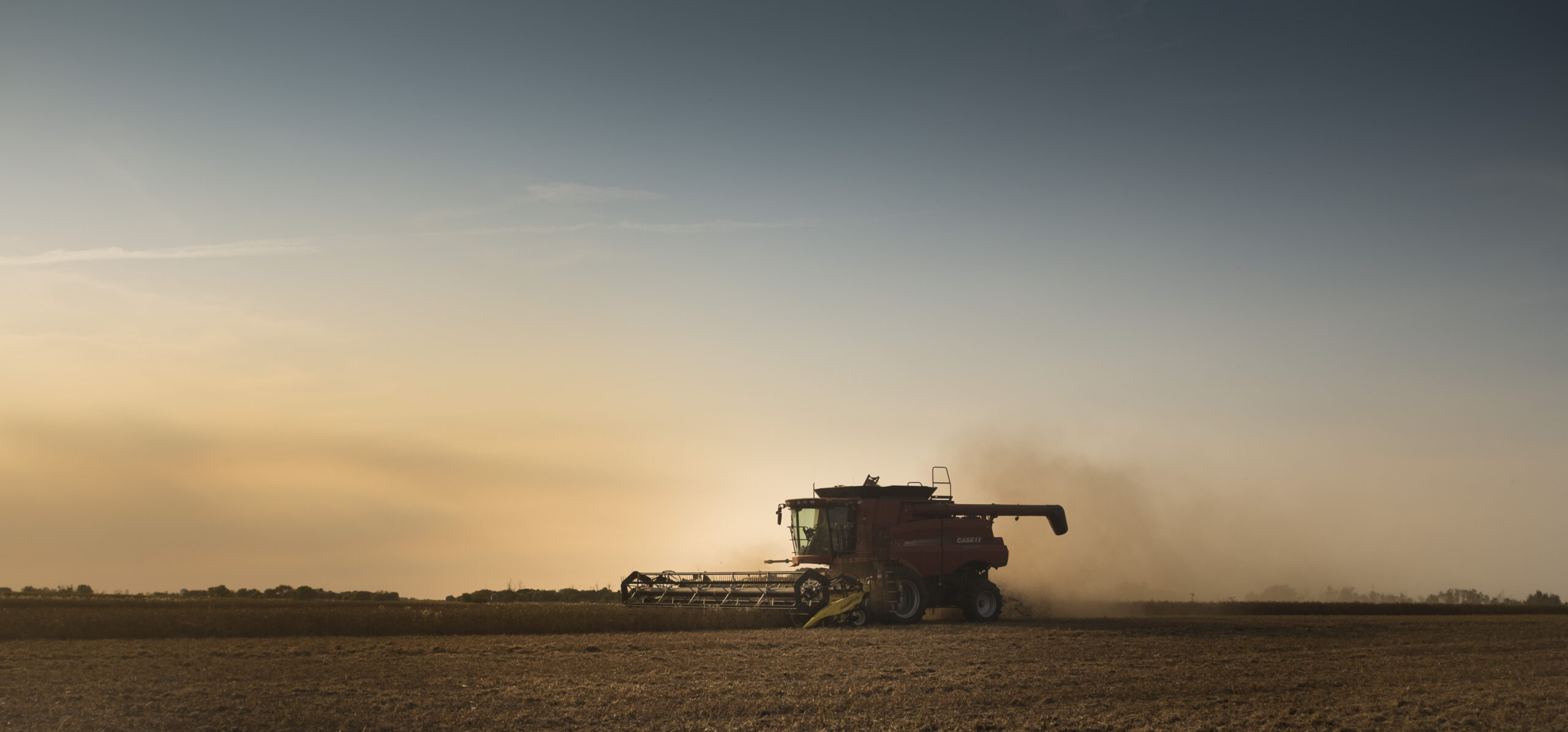Lentils are mature when the bottom third of the pods turns yellow to brown and rattle when shaken. This is the stage recommended for swathing, desiccation, or pre-harvest herbicide application.
Swathing
Swathing will hasten dry-down and reduce pod shattering. Lentils must be cut close to the ground to harvest the bottom pods, using a suggested cutter bar angle of 20° to 30°. Swather modifications, including pickup reels and vine lifters, enable easier harvesting and prevent soil from being mixed with the seeds. To reduce shatter, cut under high humidity conditions. Under optimal drying conditions, the quality of swathed seed is usually better than that of chemically desiccated seed, especially for green varieties. If the swath is subjected to heavy and/or prolonged rain, quality loss can be high due to sprouting, wrinkling and disease compared to a standing crop. Potential losses due to high winds and blowing swaths are also a consideration, especially if the crop is cut later than the recommended stage.
Chemicals For Harvest Management & Desiccation
Chemical desiccation to dry down crop foliage and weeds gives growers more control over their harvest. It can reduce the time between maturity and threshing readiness, improve crop uniformity, reduce shatter losses, and maintain seed quality by helping to avoid wet weather.
Lentils can be threshed four to ten days after desiccation if the weather is hot, dry, and sunny. Days to threshing following application will increase under wet, cool conditions. To encourage more rapid and consistent dry-down, apply desiccants in the evening and into the night, use high water volumes, and mix at the higher end of the recommended rate.
While glyphosate can be used as a harvest aid and may provide some dry-down effect, it is not a desiccant. It is registered for control of perennial weeds in lentils, including as a pre-harvest weed control. Do not apply glyphosate to seed crops, as it may affect germination and seedling development.
Do not use glufosinate as a crop desiccant on any pulse crop. There is an elevated risk of Maximum Residue Limit (MRL)-related trade disruption due to missing or very low MRLs in the most significant markets. Grain buyers will not accept pulses treated with glufosinate.
Combining
Lentils can be straight combined when seeds and pods are fully mature. Threshing equipment equipped with a flexible header, automatic height control, a pickup reel or air reels, and vine lifters is a valuable asset.
Excessively dry seed can chip and peel during the threshing process. It is preferable to thresh at ~18% moisture and use aeration to dry the sample to 14% for green varieties and 13% for red varieties for safe storage. The red lentil splitting industry favours products with a moisture content below 13% to improve efficiency in their splitting plants. Check with your red lentil buyer for any seed moisture content requirements.
Combine adjustment guidelines include:
- Low cylinder or rotor speed is required to prevent seed chipping and breaking, but fast enough to avert cylinder plugging (usually somewhere in the range of 250 to 500 revolutions per minute).
- The crop should thresh easily, so concave settings can be wide to allow good threshing and separation with minimal seed damage.
- Start with chaffers set at 3/4 inch and cleaning sieves at 3/8 inch, and adjust from there. Keep tailings to a minimum. Ensure grain and return elevators are not splitting the seed.
- Keep fan speed only high enough to produce a clean sample, as lentil seed is small and can be blown out the back of the combine.
Grain Storage
Seed moisture higher than 18% requires longer drying times, and as lentil moisture approaches 20%, the crop becomes difficult to thresh without damaging the seed.
Lentil seed containing green weed seeds and other high-moisture materials should be cleaned as soon as possible to prevent heating. Lentil seed at 14% moisture or less and 15°C or less can be stored safely for up to 40 weeks.
If heated grain drying is required, air temperatures should not exceed 45°C to preserve germination, and the sample should not be dried more than four to five percentage points per pass through the dryer. Lentil seed can be easily damaged in the drying process, so caution is necessary.
Lentil varieties with green seed coats will discolour with age, thus reducing the grade. Producers should store lentils in dry, dark conditions. Seed from successive years should not be mixed, as the oldest seed will cause a downgrading of the entire sample. Green lentils should not be stored through a second summer season to avoid excessive discolouration and downgrading.
Lentil seeds are susceptible to increased chipping and peeling if handled at temperatures colder than -20°C. Avoid unnecessary handling and consider investing in conveying equipment that is gentler on the lentil seed when moving. Belt conveyors cause much less damage than steel flighting augers. Lentils can also be damaged when dropped into a bin from a significant height, and it may be necessary to use equipment to soften the drop.
